It’s a rare machine that can titillate the senses of both rider and casual observer alike, but MV Agusta seems able to smash the sensory overload button every single time. From Agostini to Batman, this is a brand for the coolest of the cool.
The firm’s 2019 798cc Brutale and Dragster are two fine-looking nakedbikes, sharing common features that could almost allow a label of non-identical twins. They drip with refined European sex appeal, unashamedly Italian in every way, shirking the homogenous tag of other brands seeking acceptance in a mass market. It’s a style that makes you feel like you’re stepping onto a concept bike at EICMA – not a production motorcycle available for purchase.
The engine capacity itself suggests a level of daring. At 798cc, the MV can give you everything you need while resisting the temptation to simply add more cubes. The biggest change from the previous models is meeting the technical challenge of Euro 4 compliance, something MV has managed to do while retaining claimed figures of 103kW and 87Nm of torque.
It’s no minor feat for the small Italian factory, especially when you consider service intervals are now extended to a meaty 15,000km.
The result, when combined with the MVICS (Motor and Vehicle Integrated Control System) and the Eldor EM2.0 engine control unit, is a smooth-as-silk throttle response with no perceptible hunting as has often plagued the Italian brand.
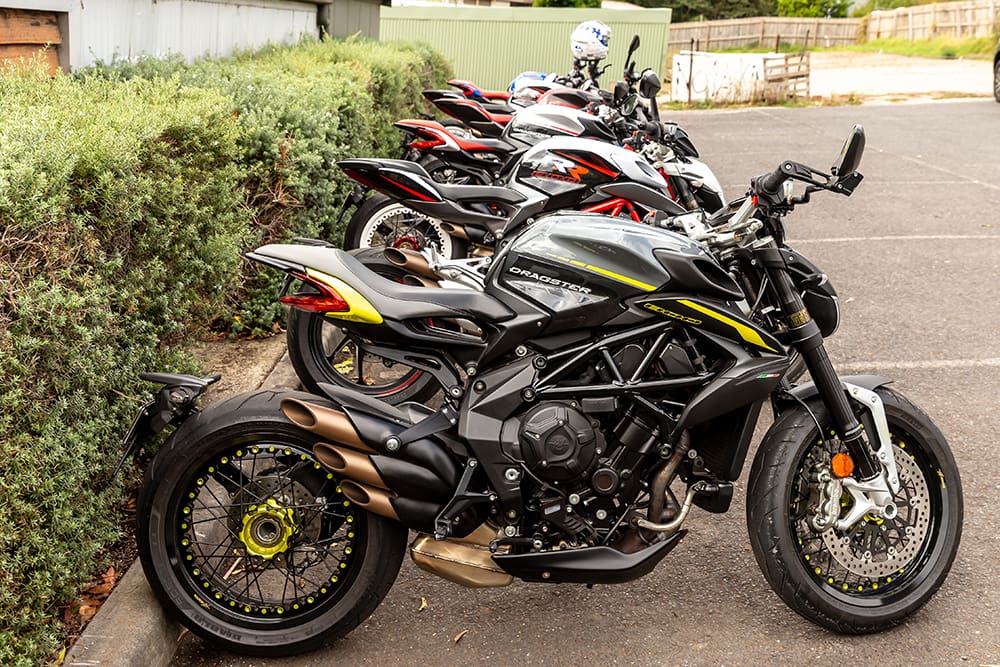
For me, the fun really starts around 6000rpm – the exhaust note picks up and so does the power. The feeling off the throttle in that range is absolutely superb – it’s the embodiment of Italian passion. The noise is pure magic the higher in the rev range you climb and while low-down power is respectable, I can’t help but hold these machines to a litre-bike performance standard – the engine feels like a giant killer.
The so-called middleweight category is a bit of a grey area these days, but make no mistake, the inline triple stacks up against any competition, which is high praise.
Why? The mid-range just keeps on giving, with a torque curve that peaks out at 10,100rpm perfectly complementing the power on offer. It’s smooth and tractable, with a level of adjustment through the engine mapping to suit different situations. Maps can be changed on the fly via a single press of a button on the right-hand switch block. A single (but assertive) press rotates between the maps – Normal, Sport, Rain and Custom.
Braking is handled by massive 320mm discs matched with Brembo radial four-piston calipers, which curiously are actuated by Nissin master cylinders. Stopping a (dry) weight of 175kg, there is incredible bite and feel from the anchors. Handlebar inputs are kept at minimum effort – even at the end of Phillip Island’s fast main straight – and not only from your braking hand, the clutch is light, too – not that you’ll use it much.
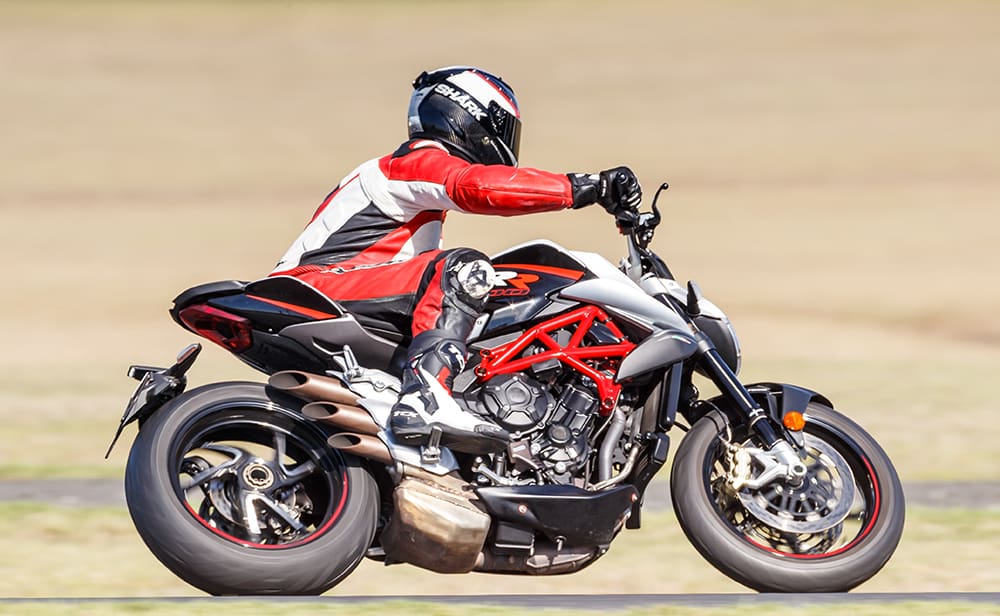
The multidirectional quickshifter is one of those features that can elicit a groan from some purists, and for a while, I was a groaner. But these days I couldn’t imagine a modern bike without a quickshifter – for road or track. The MV EAS 2.0 (Electronically Assisted Shift) is up there with the best I’ve used and the word I kept coming back to is ‘natural’ – it applies to the throttle response, brake feel and also shifting gears.
Both bikes come fitted with a steering damper as standard and it served to remove any sort of flighty tendencies that can apply to nakedbikes due to their geometry. At the track I dialled it up a bit more for added stability, but really, I think the 43mm upside-down fork was taking good care of that. These machines track superbly in the front, and they have all the adjustability options you would expect.
I would of loved a few weeks to play with settings on the rear to find the ideal compromise between performance and comfort on the road, which is more of a reflection of Aussie riding conditions than the bike.
As a side note, in case anybody is wondering what the MV design crew are doing right now, they are working on a Euro-5 compliant engine. And a new dash, because there is no way they will continue with the current unit. I found it hard to read and also slightly out of my line of sight. Please MV, tell me a TFT update is in the works.
When it comes to the differences, it’s riding position and styling that sets these non-identical twins apart. The Dragster’s ’bars aren’t clip-ons, but they are attached to the triple clamp in a way that offers a good compromise between sport and street riding. In contrast, the ’bars on the Brutale, with 10mm higher seat, are slightly higher and wider, offering more leverage. It really comes down to your riding style as to which one you’d choose. After a day on the road you certainly could notice the different riding positions, although both are very easy to live with. For longer trips the Brutale would be the pick, right up there with any other sporty nakedbike when it comes to ergonomics. The surprise for me is that with a little dialling in on the track, the Dragster inspired just as much confidence as the sporty Brutale.

Every time I swapped bikes it became tougher to choose a favourite, but it was easy to spend an entire day in the saddle on either. Ah, yes, the saddle is worth a mention. I hope you like a firm seat and by firm, I mean like concrete. The Dragster is not as extreme as the Brutale, that’s for sure, but I do wonder why MV didn’t offer at least a bit of padding. Man, those seats are hard, but they make for an engaging ride and in a strange way somehow adds to the character of these bikes.
Style wise, the Dragster has a more edgy look with lines that are a little more daring, especially around the tail. The one-piece LED tail light is a standout feature (I only wish it incorporated turn signals) and the spoked wheels are an obvious talking point.
The pillion pegs are clever fold out units that are hardly even noticeable. All these things contribute to a higher price for the Dragster, some $3000 more than the Brutale.
Fact: Everybody that rides an MV Agusta wants to take it to the track. A circuit like Phillip Island puts unique stress on a machine and really tests the engineering choices made by the manufacturer, and, as you’d expect, the race derived components really shine.
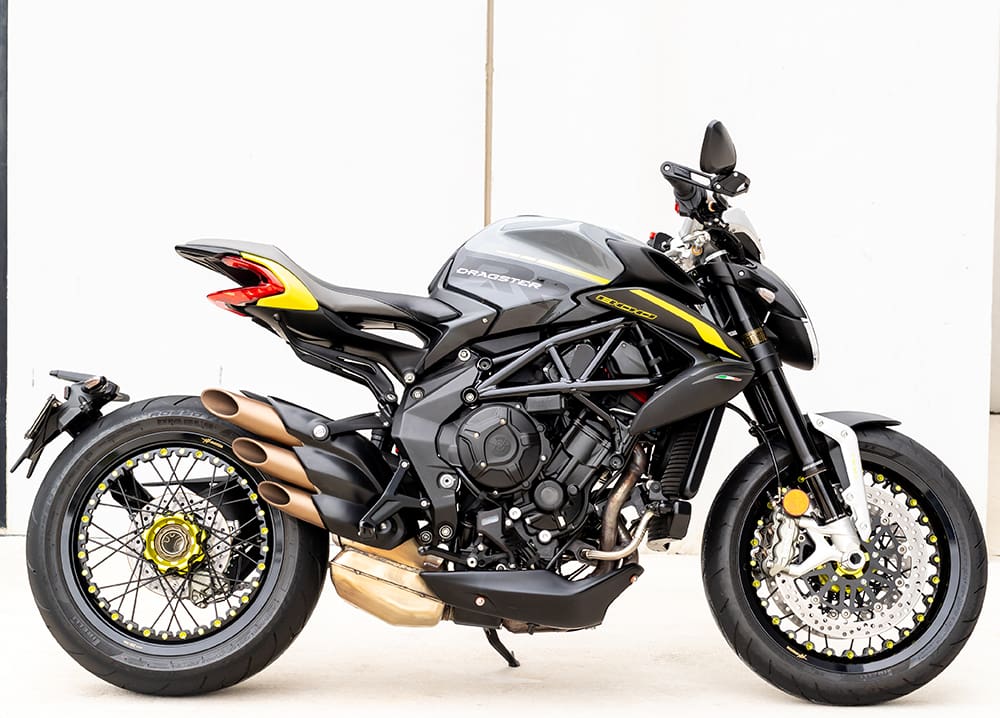
It’s interesting how features evolve, as well. That quickshifter that we once thought as overkill for the street now seems like a necessity to me. On the track, being able to flick up and down gears safely without ever worrying about the clutch is both safer and more enjoyable. The indulgent-for-the-street 43mm Marzocchi fork is the kind of component you need at the Island, along with the decent 320mm discs. Think about corners like Stoner (Turn 3) and MG (Turn 10), where two extremes of performance are required. Under power, the chassis is compliant and the same can be said under heavy braking – all the components combine beautifully.
Due to that stonking mid-range it was consistently easy to hit the mid-240km/h mark on Gardner Straight while tucked in, even though wind resistance was the problem you might expect from a nakedbike. And thanks to the steering damper, head shakes were non-existent during fast changes of direction or at high speed.
It’s sometimes difficult to tell just how much of an influence individual features have – for example, the engine employs a counter rotating crankshaft which is designed to allow tipping into corners smoother and faster. It’s difficult to know exactly how that feature works, but without doubt the chassis on both bikes inspire a heap of confidence.
The Custom engine map was pre-set for me by MV Agusta’s tech guru (and ex-ASBK gun), Chas Hern. This opens up adjustments to throttle sensitivity, maximum engine torque, engine braking, engine response and rpm limiter, parameters that are far easier to explore at the track. In fact, I think either machine would be an awesome track day weapon.
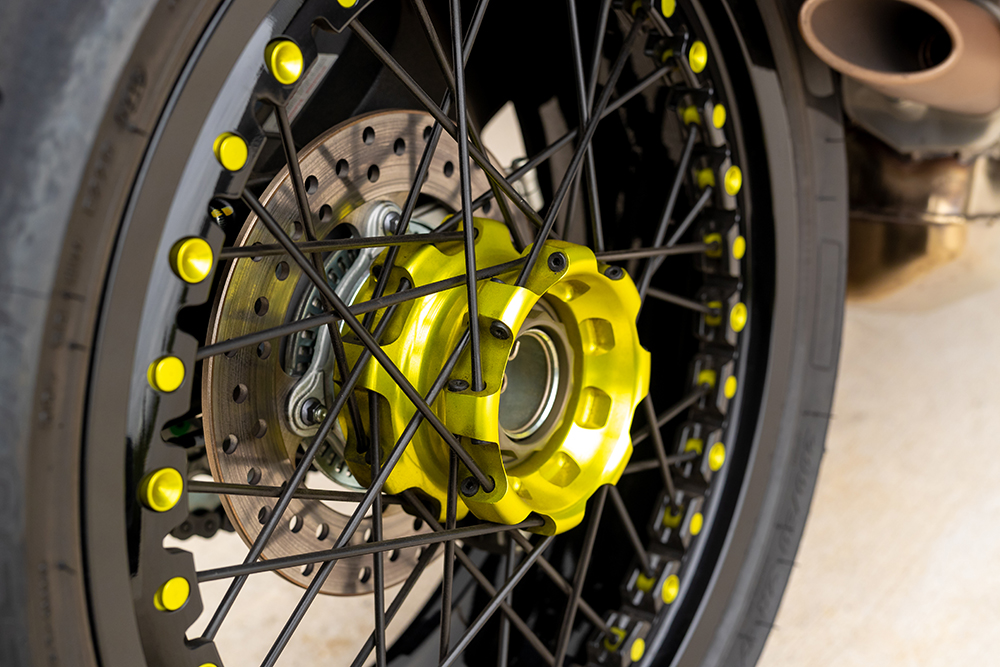
But is it worth it? I say yes. And if I was forced to choose between the two, I’d take the Dragster because what you lose in performance, you more than make up for with its unique styling. And you’d be riding the wheels off the things to be wanting more performance than it offers in spades anyway. Where do I sign?
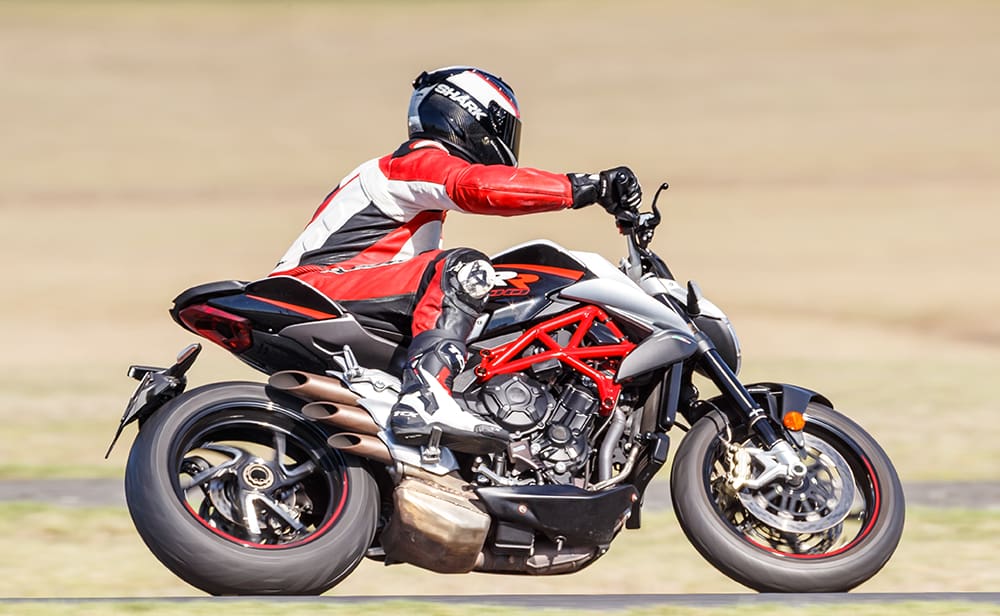
Words Matt O’Connell Photography Mark Dadswell











